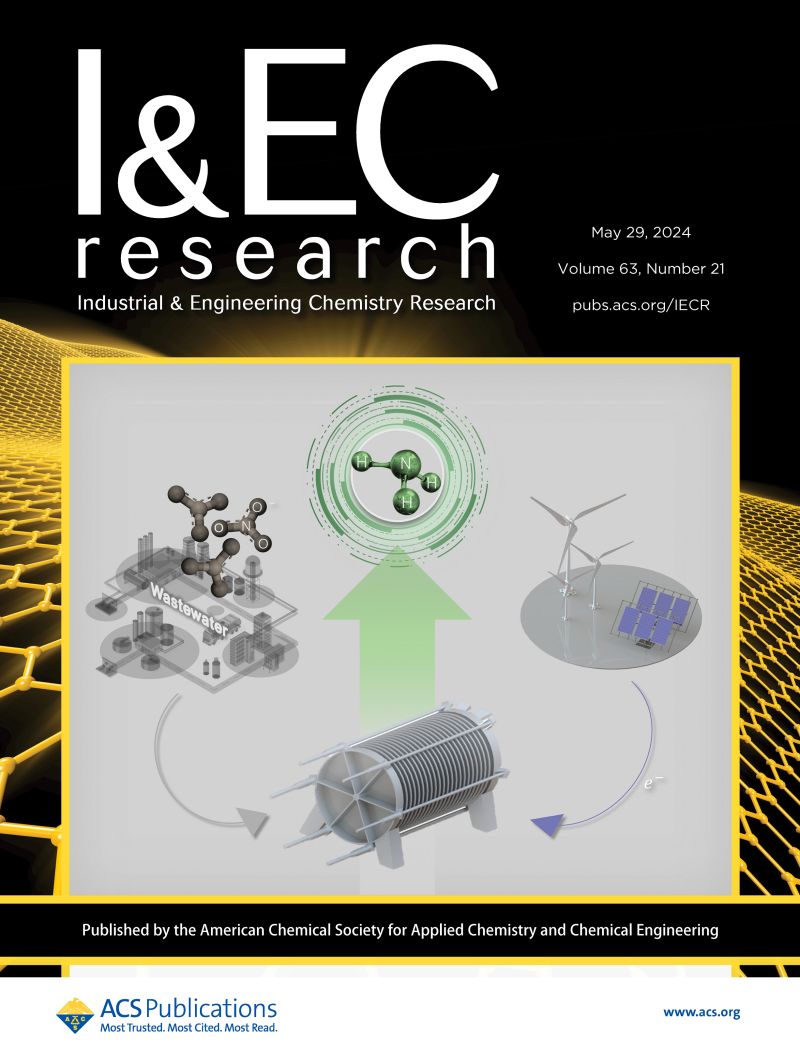Application of CP-PC-SAFT and PC-SAFT for Simultaneous Prediction of LLE and High-Pressure VLE with Universal k12 Values: II. Systems of Gases and Aliphatic Hydrocarbons with O-, S-, and N-Heterocyclic Compounds
IF 3.8
3区 工程技术
Q2 ENGINEERING, CHEMICAL
引用次数: 0
Abstract
This work continues a series of studies examining the reliability of critical point-based perturbed-chain statistical association fluid theory (CP-PC-SAFT) and PC-SAFT EoS models with universal k12 values (0.023 and 0.017, respectively) for predicting vapor–liquid equilibrium (VLE) and liquid–liquid equilibrium (LLE) in systems of gases and aliphatic hydrocarbons with substituted aromatics and heterocyclic compounds. This time, systems of pyrrole, furan, tetrahydrofuran, thiophene, 1,4-dioxane, tetrahydrothiophene, γ-valerolactone, 2,3-benzofuran, and sulfolane are considered. It is found that PC-SAFT is usually more accurate than CP-PC-SAFT in modeling vapor pressures but inferior in estimating densities and sound velocities. The relation of the latter result to the additional fictitious critical point predicted by PC-SAFT is discussed. PC-SAFT is typically less accurate than CP-PC-SAFT in predicting the high-pressure VLE in the systems of gases. Due to rigorous obedience of pure compounds' Tc and Pc, CP-PC-SAFT has an obvious advantage in predicting the critical VL data. At the same time, PC-SAFT is somewhat more accurate in estimating VLE in butane and butene isomer systems. The CP-PC-SAFT predictions for LLE in systems of n-alkanes with pyrrole and γ-valerolactone continue the patterns found in the previously discussed cases. In particular, it accurately estimates upper critical solution temperatures (UCSTs) and compositions of heterocyclic compound-rich phases but deviates from the data of n-alkane-rich ones. PC-SAFT underestimates UCSTs and yields poorer results for both LLE phases. The considered models comparably predict binary LLE in n-alkane–sulfolane systems. CP-PC-SAFT is generally superior to PC-SAFT in evaluating LLE in the considered aliphatic–aromatic–heterocyclic ternary systems. Based on the findings of this study, it can be concluded that both models with the universal k12 values can be used for preliminary evaluation of inaccessible data on phase equilibria in a large number of systems including gases and aliphatic hydrocarbons with heterocyclic compounds. CP-PC-SAFT may be more reliable in estimating LLE and high-pressure VLE, while PC-SAFT may be more accurate in predicting low-pressure VLE data.

应用 CP-PC-SAFT 和 PC-SAFT 同时预测具有通用 k12 值的 LLE 和高压 VLE:II.带有 O-、S- 和 N-杂环化合物的气体和脂肪族碳氢化合物体系
本文章由计算机程序翻译,如有差异,请以英文原文为准。
求助全文
约1分钟内获得全文
求助全文
来源期刊

Industrial & Engineering Chemistry Research
工程技术-工程:化工
CiteScore
7.40
自引率
7.10%
发文量
1467
审稿时长
2.8 months
期刊介绍:
ndustrial & Engineering Chemistry, with variations in title and format, has been published since 1909 by the American Chemical Society. Industrial & Engineering Chemistry Research is a weekly publication that reports industrial and academic research in the broad fields of applied chemistry and chemical engineering with special focus on fundamentals, processes, and products.
 求助内容:
求助内容: 应助结果提醒方式:
应助结果提醒方式:


